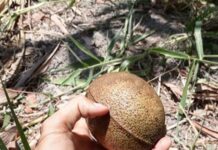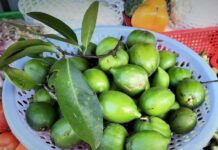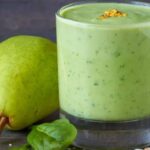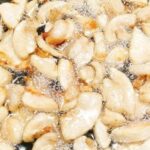When butchering a chicken, you may come across a soft, round, or slightly flattened yellow mass in its abdominal cavity. Some people refer to this as the “golden fat,” while others call it the “auxiliary gizzard.”

1. What is the yellow mass in the chicken’s abdomen?
In reality, the yellow mass found in the chicken’s abdomen is not a cyst, tumor, or anything abnormal. It is a reserve of fat specifically found in laying hens or chickens in their egg-producing phase.
During this stage, the chicken’s body accumulates more nutrients, especially fat around the abdomen, to support egg production. Hence, this fat is usually a deep yellow, soft, and sometimes attached to the ovaries or close to the liver.
Some chickens may not have this fat deposit because they belong to a breed that does not store much fat or are free-range chickens that move around a lot, resulting in less fat accumulation in their bodies.
2. Is this fat toxic? Is it safe to eat?
The answer is yes; it is entirely edible and even considered a delicacy by those who know how to cook it properly.
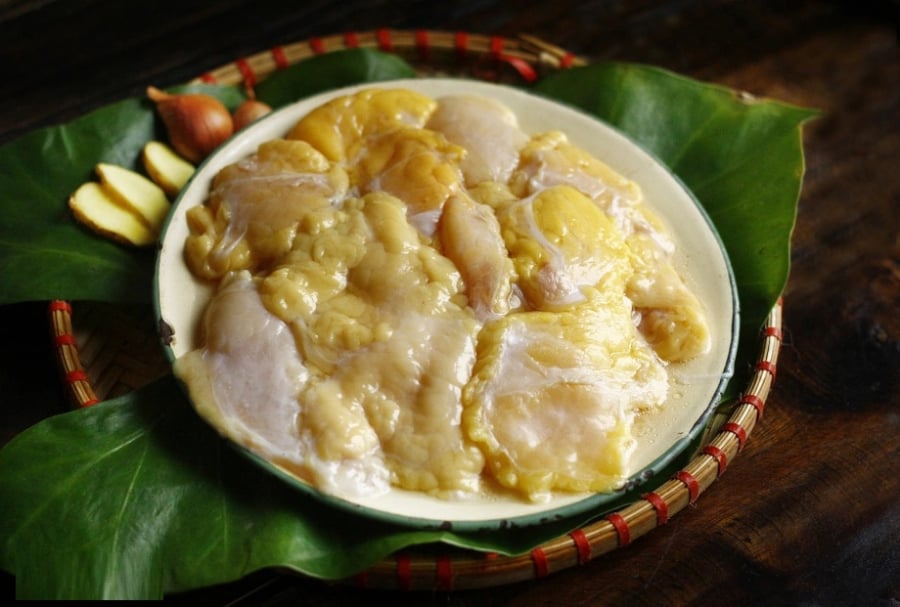
Chicken fat is particularly rich in unsaturated fatty acids, which have the following benefits:
- Aid in the absorption of vitamins A, D, E, and K.
- Enhance the flavor of dishes.
- Benefit the skin and cardiovascular system when consumed in moderation.
However, it is advisable to refrain from consuming excessive amounts if you are on a diet or have issues with blood lipids or cardiovascular health.
3. Only connoisseurs of food preserve this fat for culinary delights
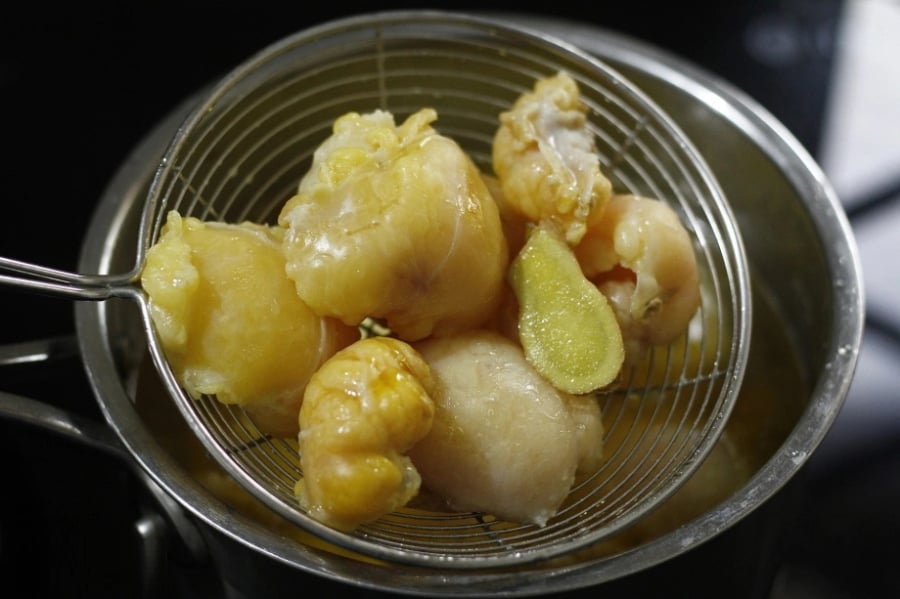
They utilize it to create exceptionally flavorful dishes:
- Fried chicken fat: When fried, this yellow fat yields pure chicken fat that is more aromatic than pork lard. It is excellent for stir-frying vegetables, scrambling eggs, or mixing with sticky rice.
- Salted chicken fat: Some people cook this fat with chicken meat, resulting in a rich and flavorful dish.
- Chicken congee: Adding chicken fat to chicken congee infuses a delightful aroma and creamy texture without being overly rich.
- Chicken rice: In places like Hoi An and Da Nang, the secret to delicious chicken rice is to drizzle a small amount of chicken fat, fried with shallots, over the golden rice.
4. When should this fat be discarded?
- In the case of intensively farmed chickens fed with growth-promoting feed, the fat may accumulate residues that are unsafe for consumption.
- If the chicken is sick or exhibits abnormal behavior, and the fat emits an unusual odor or displays colors like green or gray, or oozes liquid, it is best to discard it.
- Individuals with health concerns such as fatty liver, cardiovascular issues, or diabetes should refrain from consuming this fat to avoid elevating cholesterol levels.
The yellow fat found in a chicken’s abdomen is not waste but a natural source of fat that can be utilized to create delectable dishes. Only those with a refined palate appreciate and utilize this part of the chicken. If you have doubts, it is best to consume it only when the chicken’s source and food safety are assured.
“High-Fiber Foods That Help Reduce Belly Fat Fast”
For those striving to shed pounds and burn that stubborn belly fat, incorporating a healthy dose of fiber into your diet is key. Trimming down your waistline not only makes you feel more comfortable but also boosts your overall health when sporting a slimmer midsection. While most are familiar with subcutaneous fat – the pinchable fat just beneath our skin, many remain unaware of visceral fat, lurking deep within the abdomen. This type of fat surrounds vital organs and has been linked to serious health issues such as certain cancers, strokes, type 2 diabetes, and more.

















